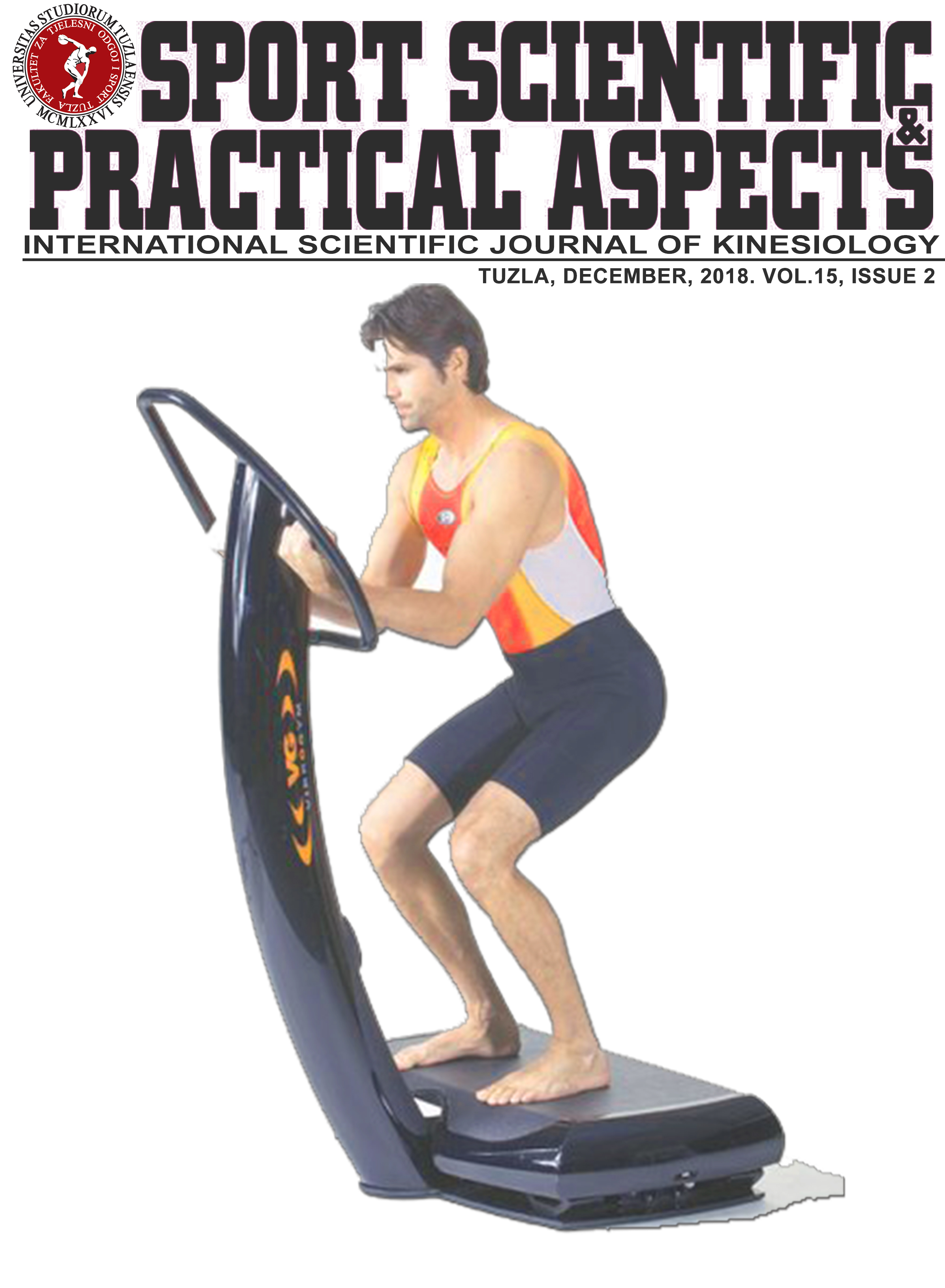DIFFERENCES IN PHYSICAL ACTIVITY LEVELS OF HIGH SCHOOL STUDENTS
Keywords:
Physical activityAbstract
Physical activity is an important factor in achieving optimal health, and it reduces the risk of the development of various diseases. This research, which is of a transversal character, had a goal to determine differences in the physical activity level between students attending different grades of high school. The population from which the sample of 349 respondents was taken is defined as the population of the first, second, third and fourth grade students from Zavidovići high schools, male, 15 to 18 years old ± 6 months. To assess the level of physical activity, a survey questionnaire was used. It consisted of 9 questions specifically rated on a scale of 5 degrees. In order to determine the differences in the treated variables for assessing the level of physical activity among students of different grades, the Kruskal-Wallis Test was applied. The obtained results showed that statistically significant differences exist among treated groups in the following ranges: the frequency of engagement in certain sports activities during their free time (two particles), at school (two particles), after school (three particles) and for each day of the week (three particles). Continuous monitoring and synchronization of measurement methodology can greatly contribute to the quality of evaluation of strategies and interventions for improvement of physical activity, and thus to address the problem of physical inactivity more effectively.
Downloads
Downloads
Published
How to Cite
Issue
Section
License

This work is licensed under a Creative Commons Attribution-NonCommercial-NoDerivatives 4.0 International License.






